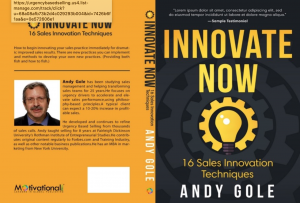 There is a powerful 4-part solution to addressing skepticism and risk aversion. You will see the need for this, if you stop for a moment and consider…
There is a powerful 4-part solution to addressing skepticism and risk aversion. You will see the need for this, if you stop for a moment and consider…
Did you ever buy a used car? Do you remember what the weather was like that day? Hopefully, you didn’t make the same mistake I made….
It was a sunny, hot summer day. You needed to buy a used car, had $900 in your pocket – and there it was on the lot. A beautiful 1969 VW Squareback. It had everything you needed – 25 mpg, 4 doors, a tailgate, a hand crank moonroof, only 30,000 miles and… it cost $900.00. You neck was sweating a little, not just from the heat of the sun – it was a big decision. But it seemed to make sense, so you went ahead and splurged. You felt proud as you drove the car off the lot.
At this point, you don’t see a need for: checking the reasonability of processes, statistics, guarantees and testimonials. You’re in love (with a car.) You don’t need a rational process.
Two months later, you took the car out for a drive. It wasn’t a sunny day. It was the rainy Fall season. The skies opened, the thunder crashed; the clouds were pouring rain like cats and dogs. The water was pounding on the roof of your car.
It was raining outside the car and as you have guessed by now, it was raining inside the car. Yes, you had bought a “sunny day used car”, rusted, with perforations in the sheet metal. (The odometer had been turned back from 200,000 to 30,000 to create an illusion of a low mileage car.)
In no time, there was 3 inches of water accumulated in the driver’s well; the heat wasn’t working. You were cold and wet. How did you feel? Foolish.
Now – when the horse is out of the barn – you see the need for a rational checking process.
Well, perhaps you have never bought a sunny day used car. But here’s a secret – every decisionmaker you are trying to influence has bought their own version of a sunny day used car. And they are skeptical; they see risk in change. What are we to do about this?
(To see the video, the Sunny Day Used Car, please click here: https://youtu.be/CpvcZX_3hpk).
Perhaps we should tell the risk averse prospective buyer to “trust us”? However, this will sound self-serving and reinforce skepticism.
Testimonials can be helpful, offering powerful stories and emotional proof. A strong testimonial has two important qualities: the “before and after” story and the journey the prospect took to overcome an important objection, like: “your price is too high” or “I’m good with my current vendor.”
Testimonials are very good, but anecdotal. The skeptic will want statistical data.
There is a powerful 4 step proving technique we can use to address the reasonable concerns of a risk averse skeptic, who at one time bought a “sunny day used car.” It can take a substantial work to prepare, but the rewards justify the effort.
The four-component proving technique includes: 1. processes, 2. statistics, 3. guarantees and 4. testimonials.
We need to demonstrate to the prospective buyer how strong:
- Underlying business processes what type of processes, rigorously followed, are measured and controlled by essential KPI’s – key performance indicators – which
- produce consistent, repeatable statistics, to show the processes are in control, and allow us to make powerful
- Guarantees, in which the prospect can have confidence, which is validated by
- Customer Testimonials which induce buyer trust to close the sale.
Now, the testimonials are not seen as mere anecdotal data, but as the justifiable outcomes of strong underlying processes. Please clarify.
To overcome the problem of the “sunny day used car”, we capture our underlying processes and use the science of statistics to persuade the skeptic to purchase the product.
Bio
 For over 25 years, Andy has worked CEOs, owners and corporate leaders throughout the US, helping them achieve great sales performance, while accelerating their sales process. During his career, he thoroughly researched virtually all of the popular sales processes. All have their strengths, and their shortcomings. From years of testing and evaluation, he developed the Urgency Based Selling® system, a unique approach founded on philosophies which drive and accelerate human behavior.
For over 25 years, Andy has worked CEOs, owners and corporate leaders throughout the US, helping them achieve great sales performance, while accelerating their sales process. During his career, he thoroughly researched virtually all of the popular sales processes. All have their strengths, and their shortcomings. From years of testing and evaluation, he developed the Urgency Based Selling® system, a unique approach founded on philosophies which drive and accelerate human behavior.
Andy has an MBA in marketing from NYU and taught small business management and selling skills for 8 years at Fairleigh Dickinson University’s Rothman Institute of Entrepreneurial Studies.
He contributes original content regularly to Forbes.com and Training Industry, as well as other notable business publications.
He is also a frequent speaker on the topics of business development, sales management, and selling process. If you would like to find out more about Andy as a presenter, please visit: https://www.urgencybasedselling.net/solutions/seminars/
For more information on our process, please feel free to visit the website: www.urgencybasedselling.net, or check out this 90 second video on how Urgency Based Selling is different: https://www.urgencybasedselling.net/how-urgency-based-selling-is-different-in-90-seconds/.
Andy is always interested in talking with both business leaders and fellow sales trainers and instructors about trends, best practices, and selling techniques. Feel free to email Andy at info@urgencybasedselling.net.